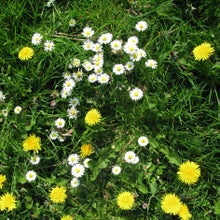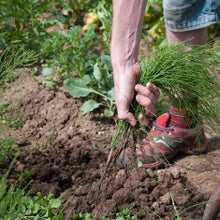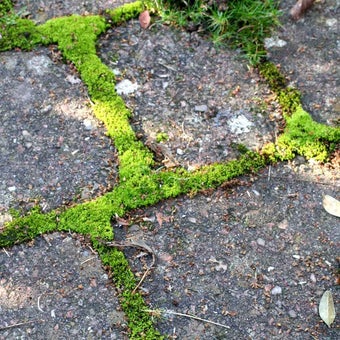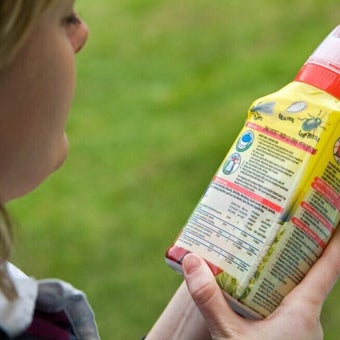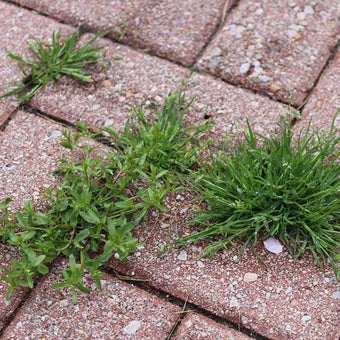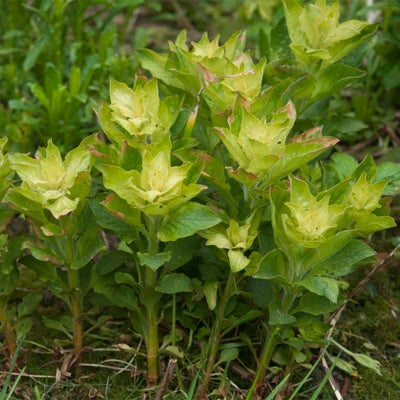
Quick facts
Weedkiller damage can be caused by all types of weedkillers (herbicides)
Incorrect use and contaminated compost, manure and green waste are the main causes of weedkiller damage
Symptoms of weedkiller damage vary according to the type of weedkiller used and the plants affected
The risk of weedkiller damage can be eliminated by using non-chemical methods of weed control
What is weedkiller damage?
The symptoms of weedkiller damage will vary depending on the plant and type of weedkiller, but typically include distorted, discoloured or weak growth, or plant death.
Weedkillers (herbicides) are products designed to kill unwanted plants. They aren’t specific to ‘weeds’ and have the potential to damage or kill a wide range of garden plants when used incorrectly.
The damage will be most severe near where a weedkiller has been used and will decrease with distance from the treated area. More specific symptoms are detailed below.
Contact weedkillers
Symptoms include:
- Soft stems and leaves accidentally sprayed or splashed with contact weedkillers usually develop a scorched appearance or brown spots.
Contact weedkillers, such as those containing acetic acid, are non-selective and work by killing the sections of plant where the spray droplets land.
Hormonal weedkillers
Roses, tomatoes, potatoes and vines are particularly sensitive to hormonal weedkillers. Symptoms include:
- Narrowed or cup-shaped leaves with parallel veins
- Twisted or distorted leaf stalks
- roots on some plants, including root crops
- Swollen stems, galls or warts on brassicas and other plants
- Plum-shaped and distorted tomatoes with hollow centres
or growth-regulating weedkillers, such as those containing clopyralid and triclopyr, are selective. They damage broad-leaved plants while leaving grasses unharmed.
Hormonal weedkillers are foliar-acting and systemic (translocated), moving down into the weed’s roots when applied to the leaves. Some can be slightly residual, remaining in the soil for a few weeks after application.
Systemic (translocated) weedkillers
Symptoms include:
- Leaf yellowing or browning, the collapse of soft stems, stunted growth and deformed leaves. If particularly sensitive plants, such as roses and raspberries, are sprayed in late summer, deformed growth may not appear until the following season.
- Clusters of short, pale shoots that resemble mini witches’ brooms, are produced by some plants, including roses.
Systemic weedkillers containing glyphosate are non-selective. Glyphosate is the only non-selective systemic weedkiller available; it kills broad-leaved plants and grasses. When applied to leaves, glyphosate moves down into the root system and can kill even deep-rooted plants.
Residual weedkillers
Symptoms include:
- Leaf yellowing or dieback appear in affected plants, but it can take some time before symptoms appear after the product is applied.
Residual weedkillers, such as diflufenican, are designed to remain in the soil for weeks and sometimes months. Damage can occur if roots growing below treated surfaces take up residual weedkillers.

What causes weedkiller damage?
There are various ways weedkiller damage can occur:
- Applying products in windy conditions. This causes the spray to drift across the garden, affecting plants that you didn’t mean to harm. Even a slight breeze can cause droplets to drift, and the finer the spray droplets are, the more likely they are to drift.
- Using a sprayer or watering can that contained weedkiller and hasn’t been rinsed and cleaned sufficiently.
- Seeping of residual weedkillers into the soil, which is then absorbed by plant roots. This can happen when too much residual weedkiller is sprayed on an area, or on light, sandy soils where it can easily flow down into the soil.
- with grass clippings (or that contains them) from lawns treated with selective weedkillers.
- Using bought-in composted or manure contaminated with persistent agricultural hormonal weedkillers.
- Misapplying or using the wrong type of weedkiller or other chemical (such as household bleach and cleaners).
- Vandalism; this is rare but there have been cases of malicious and deliberate damage to plants using weedkillers.
How to prevent weedkiller damage
The simplest way to avoid weedkiller damage is not to use weedkillers in your garden. The RHS encourages gardeners to use non-chemical weed control methods, see our guides for more information:
If you choose to use weedkillers, taking the following precautions will help to avoid damage:
- Always follow the instructions on the label; this is a legal requirement. Read the label carefully before buying and using a weedkiller.
- Apply products in suitable weather to avoid drift and damage. Do not use in wet, windy or hot, sunny weather, or when plants are suffering from drought. Avoid completely calm conditions; the risk of inhalation increases when tiny particles of weedkiller remain static, rather than being gently dispersed by light air movement.
- Use separate equipment for weedkillers. When using concentrates, rather than ready-to-use products, have separate sprayers for applying herbicides and insecticides/fungicides.
- Thoroughly wash out sprayers or watering cans after use. Rinse with three washes of a small amount of water and apply this diluted solution onto areas or plants listed on the label. Using a ready-to-use weedkiller (those in containers with their own spray nozzle) removes the need for this.
- Check the labels of selective hormonal lawn weedkillers for details on disposal of clippings. Do not collect and the first lawn clippings after application of a lawn weedkiller. Instead, mow frequently so the clippings are short and allow them to fall back into the sward; ideally do this for at least the first three mowings. If you must collect and remove the clippings, ensure you compost the clippings separately for at least nine months. If you use a lawn care company, be sure to ask if weedkillers have been applied and if you need to take the precautions described above when disposing of grass clippings.
- Do not put grass clippings into your council’s bin if they have been treated with a persistent lawn weedkiller, such as clopyralid. Doing so risks residues contaminating compost made from green waste collection bins.
- Avoid walking on areas recently treated with weedkiller. The soles of shoes and boots can spread weedkiller into other areas of your garden.
- Protect from weedkiller damage. Ideally, do not spray areas planted with bulbs, but if you feel you must, delay treatment until the foliage has died back. Rake the area to remove dead foliage, this will also help to fill holes left by removed leaves and stems, thereby preventing weedkiller entering the open necks of bulbs.
- Take care when using weedkillers around plants that or produce new shoots from , such as bamboos. If suckering growth attached to the parent plant is sprayed with a systemic weedkiller, the parent plant is likely to suffer too.
- Be selective when buying compost. Choose potting media that explicitly states it does not contain composted green waste. Melcourt SylvaGrow is an RHS approved peat-free compost that does not contain green waste, so there is no risk of weedkiller contamination. Alternatively, make your own potting mix.
- When spraying, protect nearby garden plants by fitting a hood to your sprayer to prevent drift.
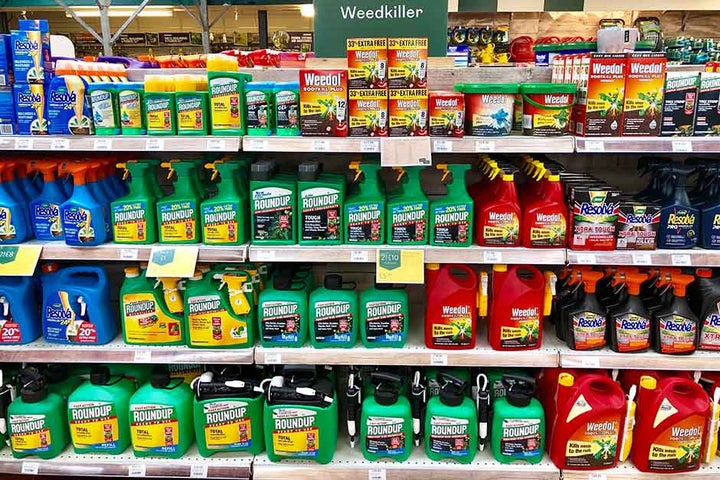

What to do if weedkiller damage has occurred
There are several ways to deal with weedkiller damage:
- Prune out any abnormal, yellow, brown or dead growth. It may be some time before affected plants start to produce normal shoots again.
- Speed up recovery of damaged plants by ensuring they are well looked after. Water during dry spells, mulch around permanent plantings, and feed if growth is slow. Plants showing symptoms of hormonal weedkiller contamination early in the growing season may grow out of the problem as the chemical residues break down.
- Dispose of some edible crops affected by hormonal weedkillers if damage is severe and recovery seems unlikely. Beans, carrots, lettuce, peas and tomatoes affected by just hormonal weedkiller can still be eaten.
- Only replant after sufficient time has elapsed for weedkiller residues to break down (check weedkiller label for details). Not all weedkiller damage results in plant death. Trees, shrubs and herbaceous accidently damaged by a contact weedkiller usually recover; those treated with glyphosate may survive but some root damage is likely.
- Report incidents of damage caused by weedkiller contamination in or manure you have bought. This can be done to the Health and Safety Executive and/or Corteva (the manufacturers of clopyralid and aminopyralid, two hormonal weedkillers that take a long time to break down after binding to grass). You should also contact the manufacturer of the compost/manure, giving details of where and when it was bought.
- Carry out a test if you suspect growing media or organic matter you have bought contains hormonal weedkiller. See the section below for a step-by-step guide to doing a germination test.
- Record damage if vandalism is suspected; photographs of affected plants can be useful. These may be needed for evidence if the matter is taken further. Weedkiller residues are difficult to test for in plant material (the RHS does not have the facilities needed to offer this service) but a report from a horticultural consultant is worth considering.
Germination test
If you suspect your own garden , or commercially produced compost or organic matter is contaminated by weedkiller, you can do a simple test for weedkiller residue:
STEP 1: Fill two clean pots with the suspect growing media (fresh, not used) and label. Pots don’t need to be any larger than 1 litre in size.
STEP 2: Fill two more clean pots with garden soil or another brand of growing media as a control and label.
STEP 3: Into each pot sow four broad bean seeds. Broad beans are sensitive to weedkiller and quick to germinate, so are a good choice. Water well with tap water.
STEP 4: Place the pots in a greenhouse or on a warm windowsill. Keep the compost slightly moist, ensuring the drainage water from the pots containing the suspect growing media cannot contaminate the control ones.
STEP 5: If, after three weeks, the seeds in the suspect growing media fail to emerge, or the are distorted, slow growing, or exhibit fern-like growth, while control plants are normal, there are strong grounds to believe weedkiller residues are present.
Note
When testing for clopyralid and aminopyralid in growing media, the manufacturers advise duplicating the test with radish seed. Radishes are unaffected by clopyralid and aminopyralid, so if radish seedlings display damage, another chemical or factor will be to blame.
If the test is positive, report your findings to the compost manufacturer and the Health and Safety Executive. Compost suspected of containing weedkiller residues can be used as a topdressing for lawns.



